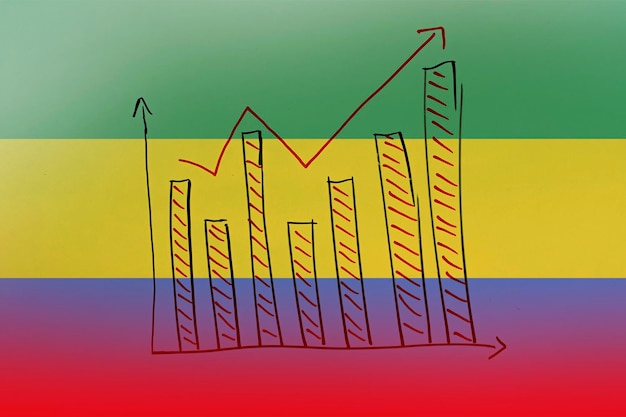Recalibrate Your Budget: A Money Management Guide After Inflation

Recalibrating your budget after unexpected inflation involves reassessing income and expenses, adjusting savings goals, and finding new ways to save money to maintain financial stability.
Is your budget feeling a bit squeezed after the recent surge in prices? You’re not alone. Many Americans are grappling with the challenge of making ends meet as inflation impacts their purchasing power. This guide, “**How to Recalibrate Your Budget After 3 Months of Inflation: A Money Management Guide**,” provides actionable steps to regain control of your finances and adjust to the new economic reality.
Understanding the Impact of Inflation on Your Budget
Inflation erodes the value of your money, meaning that you can buy less with the same amount of dollars. This can have a significant impact on your budget, particularly if your income hasn’t kept pace with rising prices. It’s essential to understand how inflation is affecting different areas of your spending to effectively recalibrate your budget.
Identifying Areas Most Affected by Inflation
Certain expenses are more susceptible to inflationary pressures than others. Focusing on these areas can help you pinpoint where to make the most impactful changes.
- Food: Grocery prices often fluctuate significantly due to inflation, requiring adjustments to your food budget.
- Transportation: Gas prices are highly sensitive to economic conditions, directly impacting commuting costs.
- Housing: Rent and mortgage rates can increase, adding strain to your monthly expenses.
- Utilities: Energy costs, including electricity and heating, can fluctuate, affecting your utility bills.
By recognizing these areas, you can begin to understand the full scope of how inflation has impacted your budget and where adjustments are most needed.

Assessing Your Current Financial Situation
Before making any changes, it’s crucial to take a comprehensive look at your current financial situation. This involves reviewing your income, expenses, assets, and liabilities. Understanding your baseline allows you to identify areas where you can make adjustments and track your progress.
Start by gathering all relevant financial documents, including bank statements, credit card bills, loan statements, and pay stubs. Use this information to create a clear picture of your cash flow and identify any potential areas for improvement.
Creating a Detailed Income Statement
An income statement outlines all sources of income and helps determine your net earnings. Ensure that you account for all revenue streams, including salary, investments, and any side hustles.
- List all monthly income sources and their respective amounts.
- Differentiate between gross income (before taxes) and net income (after taxes).
- Consider any variable income streams and estimate a conservative monthly average.
A clear understanding of your income is foundational for effective budgeting and financial planning. Take the time to ensure your income statement is accurate and up-to-date.
Cutting Unnecessary Expenses
One of the most effective strategies for recalibrating your budget is to identify and eliminate unnecessary expenses. This involves critically evaluating your spending habits and distinguishing between needs and wants. Small changes in daily spending habits can lead to significant savings over time.
Identifying Non-Essential Spending
Begin by reviewing your spending habits and categorizing expenses as either essential or non-essential. Focus on the latter, as these are the areas where you have the most flexibility to make cuts.
- Subscriptions: Evaluate all subscription services, such as streaming platforms, gym memberships, and magazines.
- Dining Out: Reduce the frequency of eating out and consider preparing meals at home.
- Entertainment: Explore free or low-cost entertainment options.
By identifying and reducing these non-essential expenses, you can free up cash to cover essential needs or contribute to savings.

Finding Ways to Increase Your Income
While cutting expenses is essential, increasing your income can provide additional financial flexibility. Consider exploring various avenues, such as seeking a raise, taking on a side hustle, or leveraging existing skills to generate extra income.
Increasing your income can provide a cushion to navigate inflationary pressures and contribute to your long-term financial goals.
Exploring Side Hustles and Freelance Opportunities
Consider leveraging your skills and interests to pursue side hustles or freelance opportunities. The gig economy offers numerous options for earning extra income on a flexible schedule.
- Freelance Writing or Editing: Offer your writing or editing skills to businesses or individuals.
- Online Tutoring: Tutor students in subjects you excel in.
- Delivery Services: Join a food or package delivery service.
These opportunities can provide a valuable source of supplementary income and help you achieve your financial goals faster.
Revising Your Savings and Investment Strategies
Recalibrating your budget also requires revisiting your savings and investment strategies. Inflation can erode the real value of your savings, making it necessary to adjust your approach to ensure long-term financial security. Assess your risk tolerance and explore investment options that can outpace inflation.
Ensure your financial plan aligns with your goals and ability to withstand market fluctuations.
Adjusting Savings Goals to Account for Inflation
Inflation can impact your savings goals, particularly for long-term objectives like retirement or a down payment on a home. Adjust your savings targets to factor in the increasing cost of goods and services.
- Increase Monthly Contributions: Consider increasing your monthly contributions to retirement accounts and other savings vehicles.
- Explore High-Yield Savings Accounts: Look for savings accounts that offer competitive interest rates.
- Reassess Investment Portfolio: Ensure your investment portfolio is diversified.
By adjusting your savings goals and investment strategies, you can safeguard your financial future against the effects of inflation.
Creating a Realistic and Sustainable Budget
The ultimate goal of recalibrating your budget is to create a financial plan that is both realistic and sustainable. This involves setting clear financial goals, tracking your progress, and making adjustments as needed. A well-designed budget should provide a roadmap for achieving your financial objectives while maintaining a comfortable standard of living.
Regularly review and adjust your budget to ensure it continues to meet your needs and reflect your financial goals.
Utilizing Budgeting Tools and Apps
Take advantage of budgeting tools and apps to make the process easier and more efficient. These tools can help you track your spending, set financial goals, and identify areas where you can save money.
- Mint: A popular budgeting app that allows you to track spending, create budgets, and monitor financial accounts.
- YNAB (You Need A Budget): A comprehensive budgeting tool that helps you allocate every dollar and achieve your financial goals.
- Personal Capital: A financial dashboard that tracks your net worth, monitors investments, and provides personalized financial advice.
By leveraging these tools, you can gain better control over your finances and make informed decisions.
In conclusion, effectively navigating inflation requires a proactive approach to money management. By understanding its impact, finding ways to reduce expenses, increase income, and setting realistic financial goals, you can regain control of your financial situation and achieve long-term stability.
| Key Point | Brief Description |
|---|---|
| 💰 Expense Tracking | Monitor and categorize all expenses to identify areas for cuts. |
| 📈 Income Boost | Explore side hustles or freelance work to supplement regular income. |
| 🎯 Savings Adjustment | Increase savings contributions to outpace inflationary effects. |
| 📊 Budgeting Tools | Utilize apps like Mint or YNAB to streamline budgeting and tracking. |
Frequently Asked Questions (FAQ)
▼
It’s recommended to review your budget monthly, or even more frequently immediately following periods of high inflation, to ensure that it still aligns with your current financial situation and goals.
▼
Consider pausing or canceling subscriptions, reducing dining out, and cutting back on entertainment expenses. These areas often allow for quick and easy savings.
▼
Research industry standards, prepare a list of your accomplishments and contributions, and present a well-reasoned case for a salary increase. Highlight how you add value to the company.
▼
Consider investing in assets like stocks, real estate, or Treasury Inflation-Protected Securities (TIPS), which are designed to protect against inflation.
▼
Yes, numerous government agencies and non-profit organizations offer free financial counseling and resources at a local level to help with budgeting and money management.
Conclusion
Recalibrating your budget after a period of inflation requires a strategic and adaptable approach. By understanding the impact of rising prices, assessing your financial situation, and taking proactive steps to adjust your spending, savings, and income, you can navigate the challenges of inflation and achieve your financial goals.





